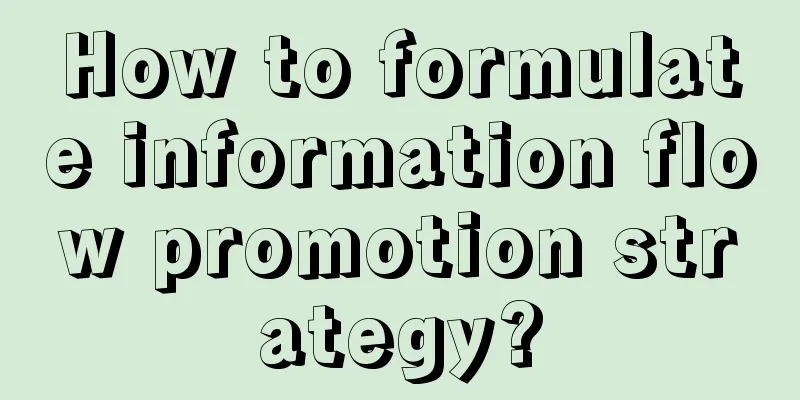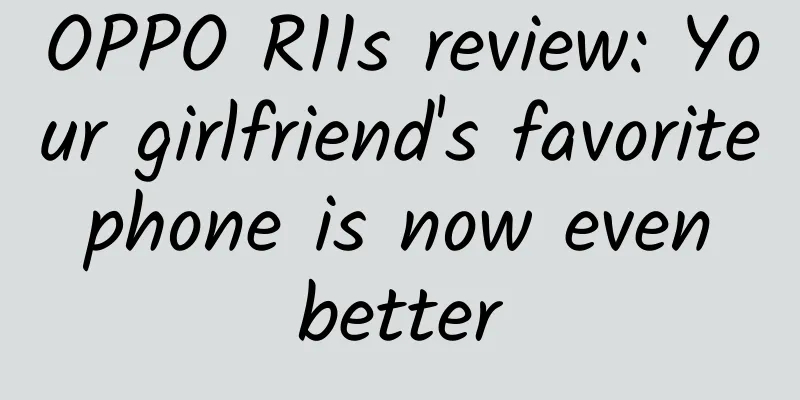Marketing promotion strategy based on user decision

|
Obviously, users have different decision-making patterns when buying toothpaste and buying a house; when faced with different types of products, users will have different decision-making patterns. Clearly understanding the decision-making patterns of users when faced with our products and their behavior during the decision-making process can provide us with good ideas for leading user conversions. 1. Factors influencing decision-making patternsThere are four main reasons why the decision-making patterns of buying toothpaste and buying a house are different: 1) Diversification of decision-making objectives When buying a house, many factors will be considered: surrounding facilities, room type, floor, orientation, price, location, feng shui, etc.; buying toothpaste is much simpler. 2) Scope of impact of the decision A house will affect a family's quality of life for decades, while the useful life of a tube of toothpaste is only one month at most; therefore, people will be more cautious when buying a house. 3) Brand Loyalty Once users form an emotional connection with your product, they will be very fond of your product; when the need arises again, users will not hesitate too much, but will directly choose your product. 4) Time pressure The time that career elites and housewives spend on choosing educational products for their children is definitely different. Because workplace elites are relatively busy, they tend to rely more on the cognitive concept that "brand is good" during the decision-making process, and will not take the time to gain further in-depth understanding; therefore, the pressure of disposable time will increase users' brand loyalty, especially for first-tier well-known brands. According to the influence of the above four factors, we can divide the decision into two types:
The decision-making process for the light and heavy options is as follows: II. Alternative PlansThe user's decision-making process is to determine the best option among multiple alternatives; the screening process will gradually divide all alternatives into four groups. 1) Know the product group Consists of products that users already know. 2) Product groups can be considered Users will conduct further investigation and understanding of the products classified into this product group. And select the best solution from them. 3) Exclude product groups Consists of products that the user is certain will not select. 4) Inert product group Users will not take the initiative to investigate and understand, but they are not averse to accepting useful information about these products. The division process of each product group is as follows: Obviously, products in different product groups will have different marketing methods, and it is very important to clearly understand which product group your product belongs to. We need to develop appropriate marketing strategies for different product groups and different decision types. 3. Marketing strategy based on user decision1. Preference strategy: re-decision mode in which product groups can be consideredImportant decisions generally involve multiple alternative plans and multiple judgment dimensions. Therefore, it is necessary to establish a strong position in the judgment dimensions that users focus on, and make users aware of your strong position through marketing. Give users compelling reasons to choose you over other brands in your product group. 2. Acceptance strategy: no longer in the re-decision mode of considering product groupsSince the product is not within the user's consideration, we first need to find a way to squeeze into the user's sight. 1) When users are collecting product information for a product group, squeeze into the user's field of vision; for example, place advertisements on the same channel to interfere with the user's original cognition. 2) Put yourself together with other products in the product group that consumers are considering, and launch sincere promotional activities; for example, a Chinese liquor brand shouts out the slogan: One of the two major sauce-flavored liquors in China; let yourself be benchmarked against Moutai, but the price is one-third of Moutai, forcing yourself into the product group that consumers can consider. 3. Maintain strategy: light decision-making mode in which product groups can be consideredIn the retention strategy, it is necessary to establish a close relationship with users and gradually make them develop brand loyalty or purchasing habits. Need to do:
4. Disruption strategy: no longer consider the light decision-making model of product groupsSince it is not within the user's consideration range and the user adopts a light decision-making mode, the user does not consider too many alternative options when making decisions, so it will be more difficult to undermine the user's existing decision. It is mainly carried out from two aspects:
IV. SummaryDifferent types of products will have different types of decisions, and different types of decisions require different marketing strategies. Whether it is product, operation or market, you should clearly understand what type of decision your product belongs to, and what marketing strategies to use to better actively convert users. Author: Log Forest Source: Log Forest |
<<: 3 short video script conversion skills, the sooner you get them the better!
Recommend
Fingerprint recognition is faster than iPhone: Meizu MX4 Pro unboxing and hands-on
Although there was the MX4 before and the Meizu B...
Google's self-driving project becomes independent Waymo after abandoning its car-making plan
Recently, Google's self-driving car project a...
Tesla Model 3 will be the first to adopt innovative glass technology
Recently, according to US media reports on Novemb...
iPad Pro wants to replace PC? 7 problems iOS 13 needs to solve
Recently, Apple released a new iPad Pro advertise...
Vivian 28-day sales training camp, how much does Vivian sales course cost?
Throughout my career, I have been involved in sal...
Stop complaining about me being unsophisticated, it's because I'm so charming
Silicon, the chemical element with the second hig...
Four aspects you need to consider before making Web App and Native App
[[146670]] When starting a business, should you c...
Pay attention to the following three points to help you transform from a programmer to an engineer
[[151076]] When I first started working, the inte...
Why is the “Father of the Telephone” not the inventor of the telephone?
The telephone is a remote communication device th...
What does the universe smell like?
Imagine if you had the opportunity to go into spa...
The 20 billion sports marketing market is about to boom, but where are the opportunities?
The sports industry showed a new look in 2016. Af...
Spring Festival holiday arrangements for 12 app stores
360 Mobile Assistant Application & Game Revie...
The display forms and monetization of online alliance promotion!
An online alliance is a group of websites and sel...
Representatives of the 2022 Two Sessions suggested encouraging childbirth through tax means! What specific suggestions do you have? Details attached!
So far, Panzhihua, Sichuan, Beijing, Hunan and ot...
Beware! Chronic fatigue syndrome may bring big trouble! Check to see if you are infected
Chronic fatigue syndrome (CFS) is a disease name ...









